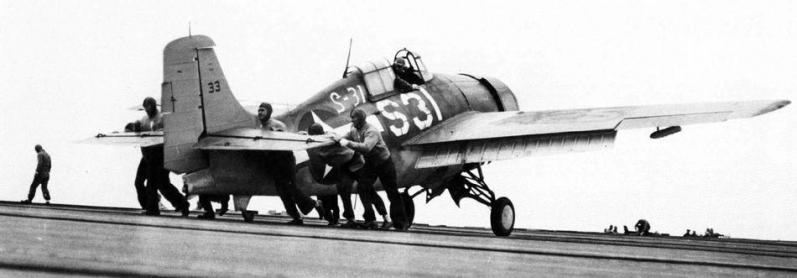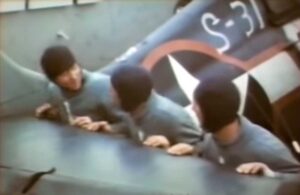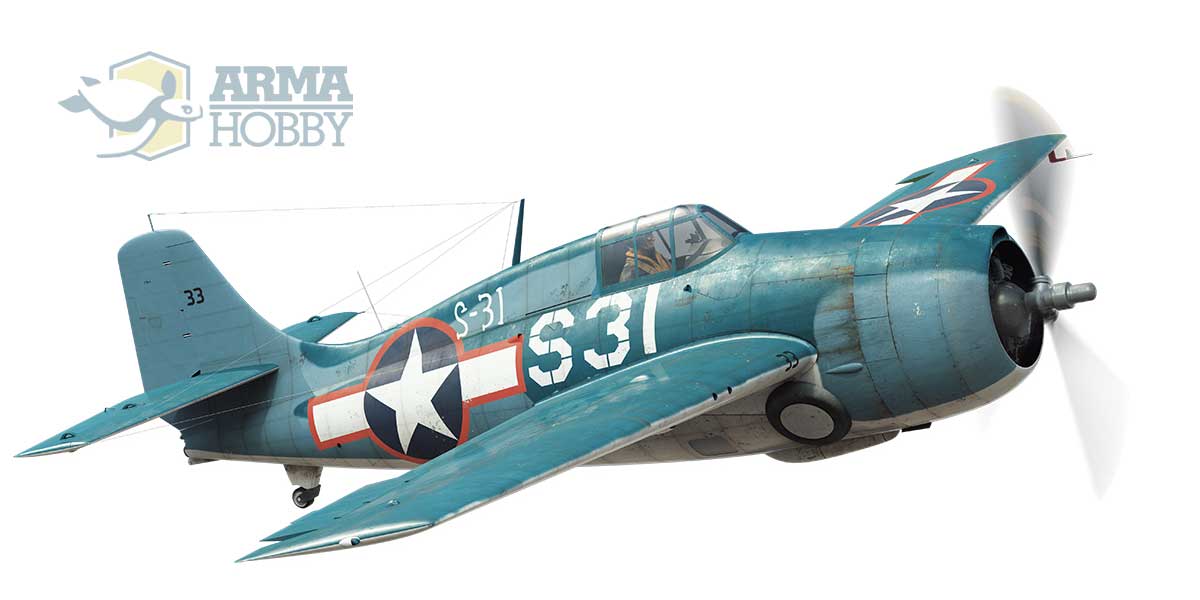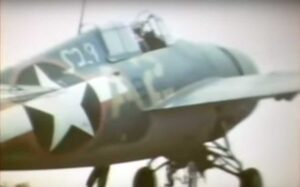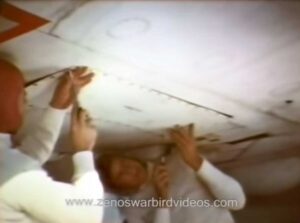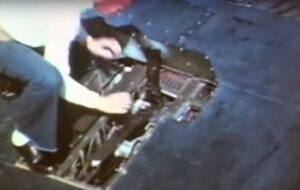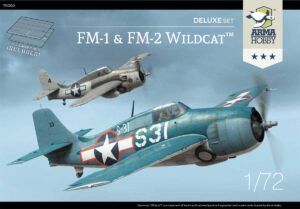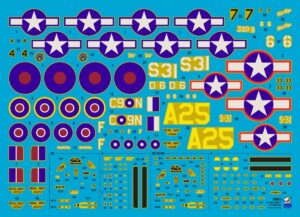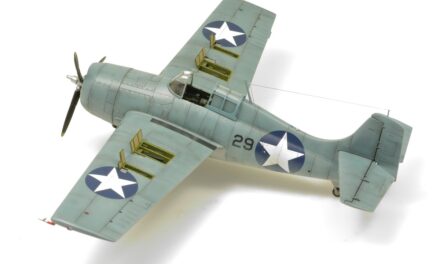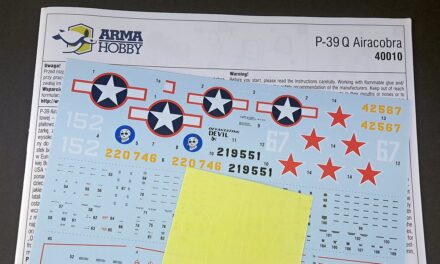In the summer of 1943, the US Navy commenced the wholesale commissioning of Casablanca-class escort carriers. Over the course of the year, fifty-five vessels of the type were put into service. During the formation of this fleet of so-called Jeep Carriers, several dozen composite carrier-borne squadrons (VCs) were trained. The story has been superbly presented in a film shot in September 1943 aboard the carrier USS Nassau.
Which Aircraft Carrier Are We Talking About?
The USS Nassau (CVE-16) was an older Bogue-class vessel, and in September 1943 it was stationed in San Diego, the primary American naval base on the West Coast. Its squadron, VC-36, comprised nine TBF Avenger torpedo bombers and twenty-six F4F-4 Wildcat fighters and was located at Ream Air Station in the same city. Here we encounter the first riddle. The film shows the aircraft aboard the USS Nassau, while the description of a photograph of aeroplane no. S-31, also presented in the film, gives the date of 6 September and informs us that VC-33 was indeed aboard the aircraft carrier.
But VC-33 had been assigned to the USS Coral Sea (CVE-57), which at the time was being commissioned in Seattle and stationed in Puget Sound, 1,700 kilometres north of San Diego. Was a mistake made as to the number of the squadron? The aeroplanes in the film have the non-typical number 33 on the wing leading edges and tail units; clearly, this would have been the squadron number. Further, we can see that the fighters are FM-1s, since they do not have a third wing-mounted machine gun. At the time, however, VC-36 operated the earlier F4F-4 version. How do we conjoin these apparently contradictory pieces of information? The answer may be found after a thorough reading of the document “Location of US Naval Aircraft”, dated 7 September 1943. VC-33 was then stationed in Monterey in the South of San Francisco. Its order of battle stood at eight TBF torpedo bombers and twelve FM-1 fighters. The simplest explanation would be that while waiting for its own aircraft carrier, the unit trained landings on the USS Nassau. Next week the Squadron transferred to Otay Mesa near San Diego. In November they left FM-1 fighters on West Coast and emabarked USS Coral Sea with F4F-4 Wildcats in Pearl Harbor.
Concurrently, a few Casablanca-class escort carriers and the newly formed composite squadrons were located at various points along the West Coast. One by one, these vessels left the Kaiser dockyard in Seattle for San Diego or Pearl Harbor, embarked their aerial units and departed for the South Pacific, or proceeded through the Panama Canal to the main base on the East Coast – Norfolk. From there, they sortied to combat German U-Boats. Nevertheless, the confusion with the squadron number aside, the film helps trace the process of development of one of the most important – albeit less well known – divisions of the US Navy.
FM-1 Wildcat No. S-31, VC-33, September 1943. Artowork by Piotr Forkasiewicz.
VC-33 Trains Aboard the USS Nassau
The film, which was made for instructional purposes, presents the operations conducted aboard the escort carrier, rules of safety, take-offs and landings, and aeroplane handling. Although many modellers frequently think differently, refuelling and ammunition loading were not performed in the hangar bays. And attentive viewers will find a great many titbits and inspirations for a diorama of the aircraft carrier’s flight deck.
First stage of repainting, yellow Stencil numbers from series A i and hand painted S. White A series number on the wing.
S-31 with overpainted A-series numbers and S series stencil numbers painted on fusefalage.
The FM-1 Wildcats presented in the film show signs of intense operational usage. Importantly, they carried two sets of markings. First, they had A numbers on the wings and fuselage sides, and later received S numbers, which were hand-painted, while finally standard S numbers were “properly” applied beneath them (but only to the fuselage). Letters of this size were used by various training units throughout the war. In the film, the colours of the numbers vary between white and yellow. The photographs allow us to recreate the order in which they were painted onto the aircraft. A non-typical marking is the black squadron number, 33, which was painted in a non-standard typeface on the leading edges and tail units.
Squadron Number 33 on wing’s leading edge and on tailplane of the S-31 Wildcat.
The nationality markings were stars with white stripes edged in red, which were located at four points (fuselage sides, left upper wing surface, and right under wing surface) and remained unchanged from the end of June till mid-September. Some of the aircraft even have traces of painted-over stars without crosswise stripes, which were placed at six points.
Flight deck service. Rearming and refuelling (with rag cleaning of spilled fuel) of the FM-1 Wildcat.
The aeroplanes have the intermingled tri-colour camouflage that was used from the beginning of 1943 and comprised Sea Blue, Intermediate Blue, and White. Their paint coatings show signs of wear and tear, and have clearly been reapplied. The fatigued appearance of the aircraft will doubtless inspire modellers to come up with unique weathering effects.
FM-1 Wildcat S-31, VC-33, USS Nassau CVE-16 flight deck, September 6, 1943 California coast. Artowrk by Zbyszek Malicki.
English Translation by Maciek Zakrzewski
You may be interested in:
- FM-1 & FM-2 Wildcat Deluxe Set and other kits in the Arma Hobby webstore.
Modeller happy enough to work in his hobby. Seems to be a quiet Aspie but you were warned. Enjoys talking about modelling, conspiracy theories, Grand Duchy of Lithuania and internet marketing. Co-founder of Arma Hobby. Builds and paints figurines, aeroplane and armour kits, mostly Polish subject and naval aviation.
This post is also available in:
 polski
polski


